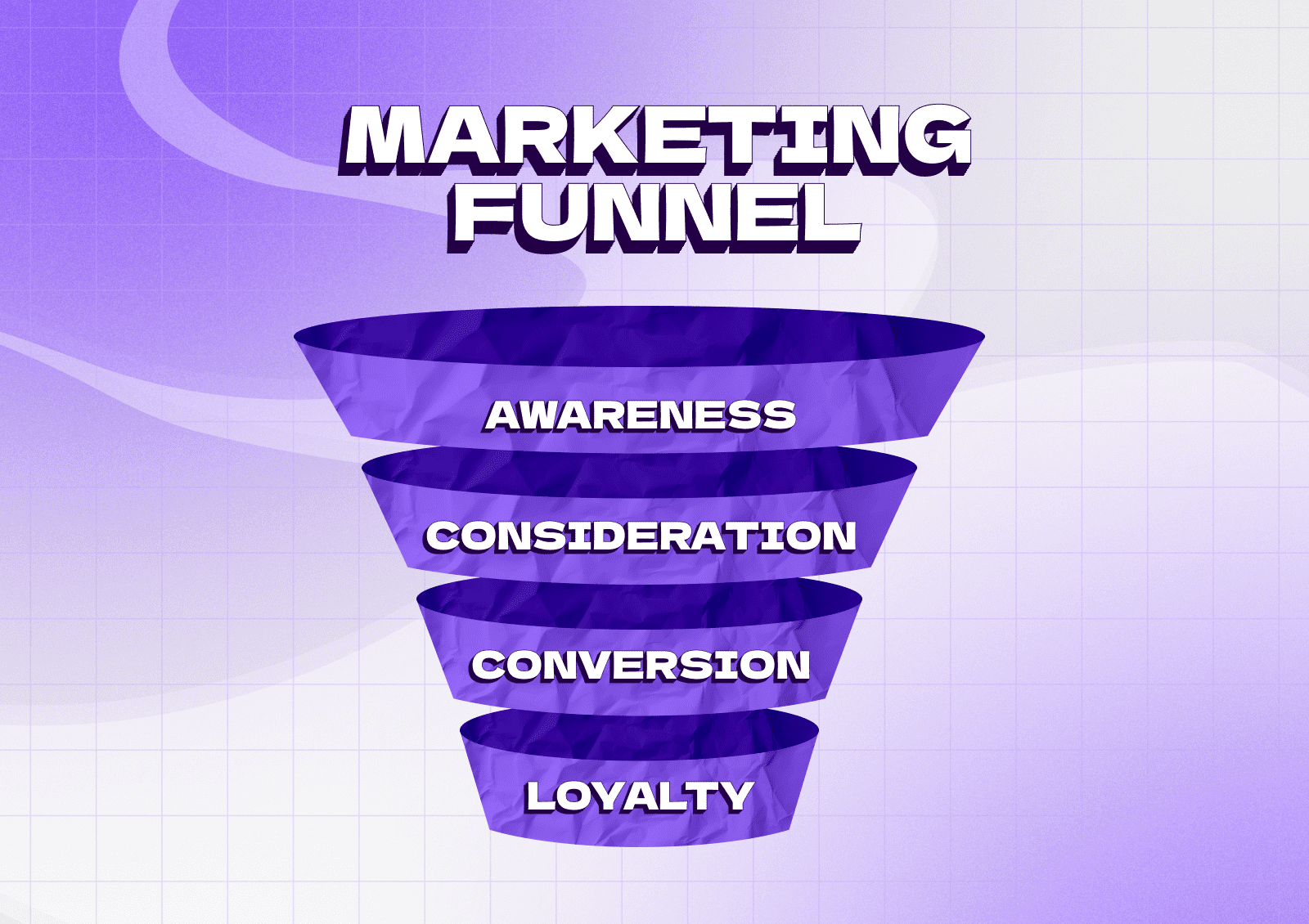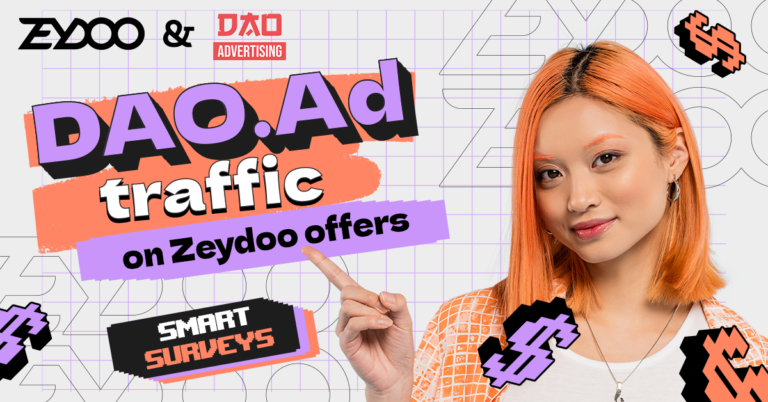[[{“value”:”
Do ‘funnels’ really originate from ‘fun’?
For many affiliates, it’s not really so because the majority of marketing funnels are very standard and look something like this:
Creative – pre-lander – landing page – conversion
Does it make sense to go beyond this simplest and proven flow? What’s the reason to add more elements to a funnel or, on the contrary, make it shorter?
We asked media buyers and marketing specialists to shed some light on how funnels work and how to build them wisely.
Quick Note: What Are Funnels?
In simple terms, a marketing funnel is a user flow from their first touch with a product to the conversion – be it a purchase, registration, app download, or whatever.
Here is how it’s traditionally depicted:
The term ‘funnel’ means that every next step sifts out some portion of traffic. Let’s imagine you run a VPN offer and need to motivate users to download a VPN app. So, a classical funnel will look approximately like this:
Awareness: 10,000 users see your Push notification creative
Interest: 1000 users are interested enough to click this Push notification and read the pre-lander content
Conversion: 100 users downloaded the app
Loyalty: 50 users will use the app regularly and bring profit to its owners: for example, watch ads or purchase a paid ad-free version.
We are definitely losing people on each step – and this is an inevitable process. Still, at the same time, we get rid of those who are not engaged and warmed up enough to become loyal customers – users we can call ‘high-quality traffic’.
So, how do we build the funnel to bring the most relevant users to a conversion stage—and make a pretty large number of users relevant?
Funnels FAQ: Ask Experts
We collected several questions you might have always wanted to ask about funnels. (if, in fact, you wanted to ask different questions, 1) we are sorry 2) you are welcome to discuss them on our Telegram Chat!)
And, we invited three heroes to reply. Here they are:
Serge A., a media buyer and a professional funnel builder
George M., a digital marketer with a decade of experience
Alex K., a team lead in media buying
So, let’s dive in!
How do you build a funnel? What is your overall approach to picking its elements?
George replies:
In order to build a proper funnel for any type of offer, you need to:
Understand the traffic nature/origin – whether it’s an entertainment website or a content platform and the ad formats you’re going with;
Depending on the above, you need to build proper ad sets – creatives + landing pages (if it’s a creative-based ad format like banners or Push) or go flap with a landing page alone (if it’s Popunder, etc);
Test 2-3 classic approaches that have proven themselves and also try something fresh to surprise the audience. Find out the best ad set from your tests.
After getting the first results, optimize campaigns according to the metrics you have (regs/installs/leads, etc.) and sources you’re advertising with. Once you found 10-50-1000 converting sources – rain hard on those, trying to squeeze out the competition. By the end of the reporting timeframe – calculate in-between results and measure your ROI.
That’s your funnel done for a source/GEO – now you can go on to the next one 🙂
Serge replies:
Most working funnels are really similar, so I usually pick the one that I guess will work based on my experience. Whatever the user flow, you need to test it anyway: you never know 100% if a particular funnel will work.
In my opinion, the most important funnel part is content: everything you say on your ad creatives, pre-landers, or landing pages matters and plays a big role in how willingly users convert.
In my experience, native, non-polish content brings many more conversions than super-professional corporate texts and images.
However, it’s also very important to be aware of your traffic source. Some funnels and sources just don’t make a match. For example, a motivating prelander with perfect story-telling techniques might not really work out on cheap Popunder traffic. But, it can convert as hell on some native ad sources!
Alex replies:
In my current work, where I am focused on app promotion, we mainly use standard funnels:
ad creative – pre-lander – App Store/Google Play.
Such an approach perfectly works when you have a plain offer easy to understand. For example, if you run a VPN app, it’s enough to give some information about it on a prelander + describe it nicely at the app store.
People know what VPNs are, so they’ll get your offer quickly.
However, some offers are not that clear. For example, Zeydoo’s Cryptomania has a proven flow with an extra warming-up pre-lander. It looks like this:
A user sees an ad
Then, they are redirected to the first pre-lander
After that, another Giveaway pre-lander appears; it suggests a user spin a wheel and win a bonus for the Cryptomania app
Finally, a user is redirected to the App Store
The flow is longer, and it helps to better explain the point of the offer. Cryptomania is a trading simulator. Not everyone knows what trading simulators are! So, an extra explanation won’t hurt.
It seems like the shorter a funnel is, the quicker and more willingly a user converts. Is this true?
Serge replies:
Sometimes it is. However, do you always need this quick conversion?
Suppose you want to quickly send traffic to an eCommerce shop app. A banner saying ‘Only today: iPhone 15 for $100’ and leading to the App Store might be enough to motivate users to download the app. But will these users bring a stable income to an app owner in the future?
When you send traffic that doesn’t work in the long term, some offer owners might refuse to work with you. A single conversion is half the battle: everyone wants users to bring money in the future, and that’s why the RevShare payment model actually exists.
So, to attract high-quality traffic—not just one-off users—you need to use a funnel that sorts out everyone who might show poor performance. Are people ready to go through a couple of pre-landers and complete a conversion on the landing page? Well, they have all the chances to become active users of the app, site, product, or service you promote.
Another example: some offers imply pay-on-delivery conversions. It means you hit a conversion only after a user makes an order, waits until the goods are delivered, and pays for it. Of course, you need to be sure that this purchase is not really impulsive then! That’s why it makes sense to prepare a user to buy consciously with a prelander or some other content like survey or video.
To sum up: a shorter funnel might lead to a quicker conversion, but this doesn’t always mean good traffic quality in the long run.
George replies:
The funnel length will totally depend on the terms you’re working with and the offers and products you run. Here is how I see it for different verticals:
Leadgen offer: the shorter the better. All the rest would be on the side of an offer owner.
iGaming offer: you should at least know how well your delivered user is doing after the registration deposit. Getting as much data for users’ lifetime value, return rates, and other metrics is way more important here.
Social offer: I don’t really love them, so my way of working with them is only SOI or CPL conversion – fast and simple.
When you promote complicated products in the iGaming or Finance niche, you should understand their value to users and build your funnels around this.
Can you give an example of some non-standard funnels you saw or tested?
Serge replies:
Yes, I saw some pretty unusual approaches. Look:
One Finance offer involved a pre-lander with a very (VERY) long survey. It contained about 50 questions or so – everything about a user’s income, current financial situation, etc. Not very entertaining, right? However, the offer owner insisted on having this in the flow: they wanted to collect a group of very specific leads with particular treats.
Another approach that might seem strange and conversion-breaking (but still works, then!) is when a user needs to watch a pretty long video. For example, this can be an intro to some complicated Finance product. The key part is that a user can’t skip the video or scroll it and is allowed to convert only after watching it until the end. This sounds like a pretty aggressive warming up, but it attracts only people who were THAT interested in watching a long educational film.
Has your funnel ever failed?
George replies:
Definitely. Reasons could be numerous, such as wrong timeframe/schedule to advertise, messing up with the targetings, government restrictions or lockdowns, server malfunction or downtime, and many, many others.
Overall, I would’ve grouped those failed attempts into several groups:
Dumb mistakes (or rookie mistakes) – wrong geo/targeting, locked/restricted offer, wrong URL, etc;
Force majeure – something you cannot affect (flood in Brazil, tornado in the Philippines, etc);
Tech issues: broken landing pages, tracking issues, etc.
What was your most successful funnel?
George replies:
I would answer this way: the most successful funnel is the one that is universal and could be applied to different GEOs/offers/approaches.
For example, a survey. You can create one for almost any type of offer/product by simply adjusting the list of questions and background.
And…
If you read this, you got caught in our funnel! Yep, we want to deliver you some fun and educational content and welcome you to our CPA network—so JOIN Zeydoo!
“}]] Guides, GUIDE, OFFERS



